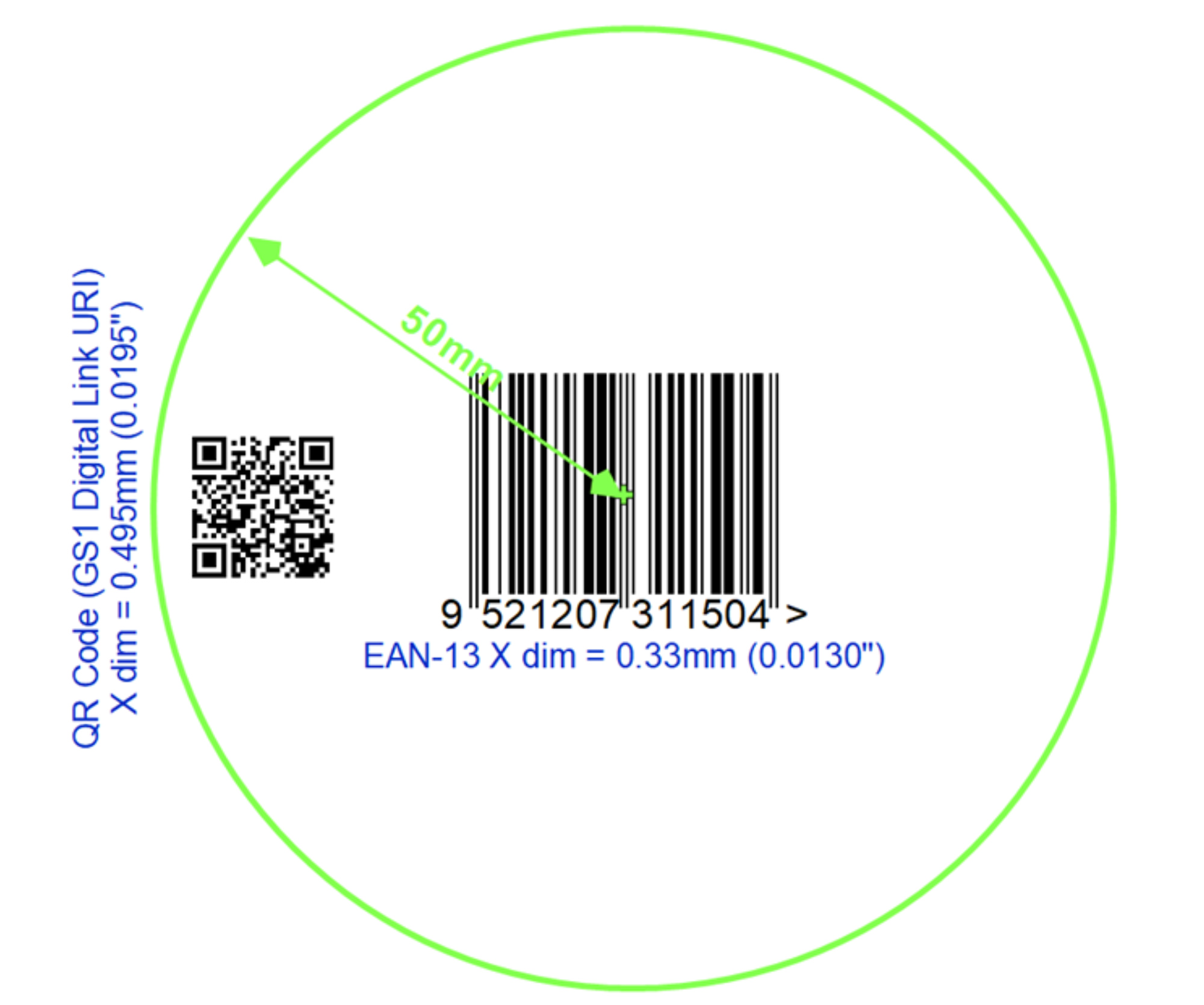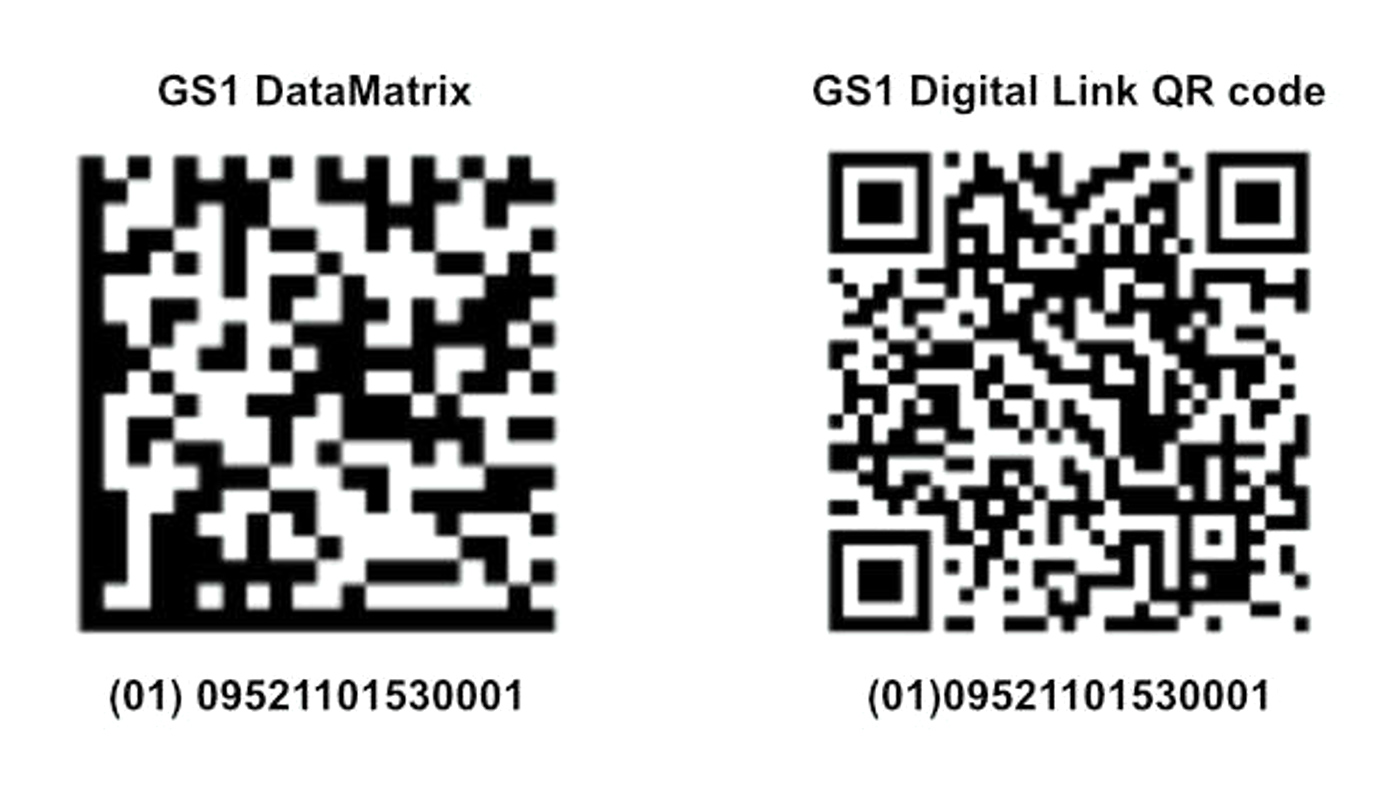The existing retail barcode system, based on the EAN/UPC linear barcode, has been working successfully for over 50 years. However, the growing need for enhanced functionality has ushered in an era of 2D codes—specifically both GS1 and non-GS1 DataMatrix and QR codes®. This transition from linear to 2D codes, named GS1 Sunrise 2027 initiative in the US, often referred to as the 2D Migration elsewhere in the world, delivers advantages to brands, retailers, and consumers alike.
Implementation timeline
While the program is identified as Sunrise 2027, nothing about the date will magically flip a switch from linear to 2D codes. Instead, with GS1 Sunrise guidance, all POS systems and retailer software should meet requirements for scanning 2D codes starting in 2027. For now, it is estimated that by 2027, a critical mass of point-of-sale systems (POS) will be capable of handling the data encoded in the GS1 2D codes.
So, how should brands get started?
GS1 recommends that brands looking to align with GS1 Sunrise 2027 join the transition by adding 2D codes to their packaging along with the existing EAN/UPC barcodes. In their 2D Barcodes at Retail Point-of-Sale Implementation Guideline, GS1 provides this chart to compare the code options during the transition period and the 2027 ambition goal:

- Transition Period: Dual-marking transition phase with EAN/UPC and a 2D code
- Ambition for 2027: EAN/UPC or a 2D code (preferred)
Doing this will enable brands to take advantage of the additional data (and customer interaction if using QR codes encoded with GS1 Digital Link) while also helping to ensure their products can be sold seamlessly in stores without updated POS systems in place.
Code locations
GS1 has conducted extensive testing to determine the optimal positioning of the two codes on a package to avoid disrupting the scanning process and causing issues at checkout. It is recommended that the two codes be located so they are in the field of view of both POS scanners and handheld barcode scanners. In their 2D Barcodes at Retail Point-of-Sale Implementation Guideline, GS1 provides this graphic to describe a 2D code’s placement in relation to a linear barcode:

The testing has shown that the two codes must fit within a 50mm radius from the center of the EAN/UPC code on the package for consistent scanning results. It’s important to note that while 50mm is considered the maximum spacing for the two codes when designing the package, the code’s quiet zones, as indicated in the guide here, should be accounted for as well.
Other design and printing considerations
When designing the package graphics for dual barcoding, some important considerations should be made:
- While EAN/UPC barcodes are usually pre-printed on the package, GS1 2D codes often include production data (dates, line codes, batch numbers, etc.) and need to be printed at, or close to, the time of packaging.
- In addition to ensuring your printer can accurately print GS1 2D codes, be careful to allow room for regular packaging machine position variation when setting up the code placement. Don’t allow the 2D code to drift too close to the EAN/UPC code.
DataMatrix or QR code?

Both GS1 DataMatrix and GS1 Digital Link QR codes are promoted by the Sunrise 2027 program. They can be encoded with the product GTIN, expiration or use by dates, serialization, etc., and scanned at point-of-sale.
While GS1 DataMatrix codes can be encoded with GS1 Application Identifiers (if you use GS1 128 on your secondary packaging, you’ll be familiar with this,) common non-GS1 DataMatrix and QR codes can be coded with the GS1 Digital Link structure, which combines Application Identifiers with a URI link to access information and resources online.
In the example 2D codes shown above, the product data is the same for each:
- GTIN: 09521101530001
- Lot or Batch Number: ABC123
- Expiration Date: 270104 – January 4, 2027
- The data encoded into the GS1 DataMatrix code is: {FNC1}010952110153000110ABC123{GS}17270104
The data encoded in a Digital Link QR code includes a Uniform Resource Identifier (URI) that links to online resources for that particular product.
This means that the GS1 Digital Link is the most powerful of the GS1 barcode syntaxes. It eliminates the need to add separate QR codes to a package for consumer engagement and other marketing functions.
The data encoded in the sample QR code above is in this format, directing consumers to an appropriate web location.
- https://example.com/01/09521101530001/10/ABC123?17=270104
What happens at checkout?
A primary focus during the development of the Sunrise 2027 initiative was to make certain that the codes would integrate seamlessly with point-of-sale systems without causing any disruptions.
Extensive testing has been carried out, including determining how POS systems should handle dual-marking scenarios throughout the transition, when both a linear and 2D code appear in close proximity.
As a result of this, GS1 and the POS system manufacturers have agreed on three modes of operation for in-store scanning at the point of sale. Learn about the three modes in the GS1 Implementation Guide.
Printing GS1 2D codes
Choosing the right printing technology for 2D codes on your packaging can be challenging due to the numerous options available.
This is where Videojet can help. With a comprehensive range of advanced printing technologies—including continuous inkjet (CIJ), thermal inkjet, laser, and thermal transfer overprinting (TTO)—Videojet brings a wealth of experience to the online printing of 2D codes on retail packaging.
At Videojet, we provide unbiased advice and testing to help determine the print technology best suited for your applications, as well as solutions for handling the data to generate and print 2D codes.
Final thoughts
Sunrise 2027 is GS1’s initiative to introduce 2D codes to retail products, enhancing the functionality of the existing barcode system that has been in place for over 50 years. GS1 DataMatrix and Digital Link QR codes offer expanded capabilities, encoding unique product information along with content that improves the consumer experience.
While 2027 marks the estimated point when a critical mass of point-of-sale (POS) systems will be ready for 2D code scanning, phasing out traditional linear barcodes is not part of the GS1 Sunrise initiative. Brands are encouraged to adopt dual barcoding—printing both a GS1 2D code and an EAN/UPC barcode on the package—to ensure compatibility across different retail environments during the transition period.
Further reading:
Videojet: 2D Code Revolution
Videojet: Essentials of Printing Barcodes and QR Codes
GS1: 2D Barcodes at Retail Point-of-Sale Implementation Guideline
QR Code is a registered trademark of DENSO WAVE INCORPORATED.
